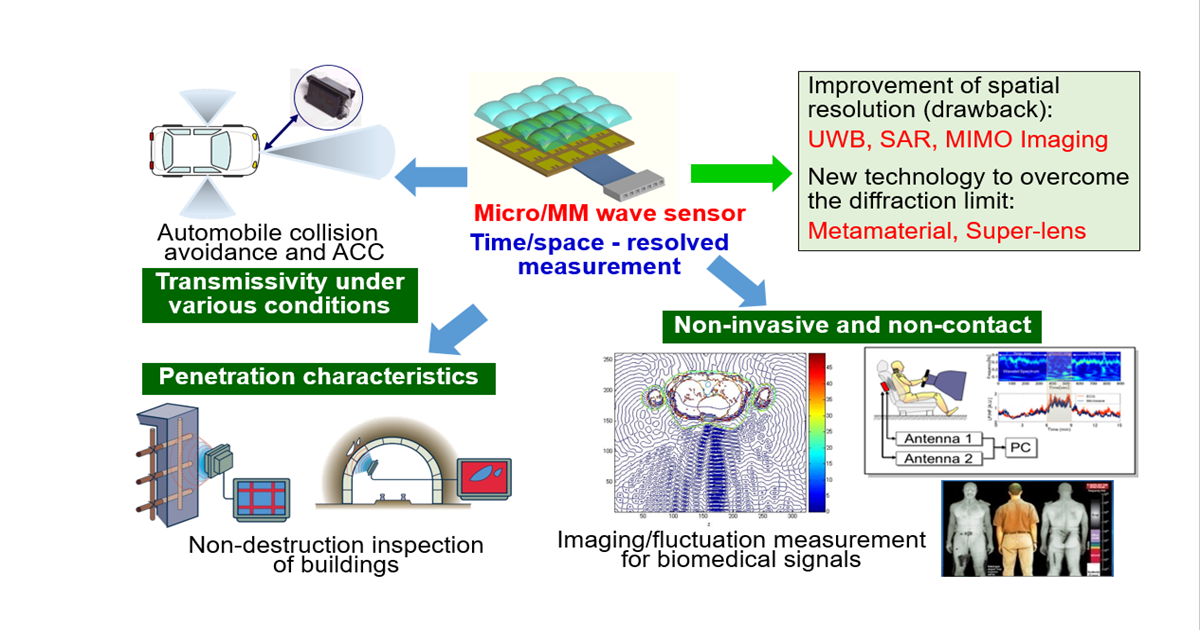Development and Applications of Microwave/Millimeter Wave Diagnostics in Industry
A special issue of Applied Sciences (ISSN 2076-3417). This special issue belongs to the section "Applied Physics General".
Deadline for manuscript submissions: closed (20 September 2022) | Viewed by 25279

Special Issue Editors
Interests: calibration; marine radar; oceanographic techniques; tides; anechoic chambers (electromagnetic); electrocardiography; height measurement; image resolution; lenses; level measurement; light diffraction
Special Issues, Collections and Topics in MDPI journals
Interests: millimeter-wave imaging; vacuum microelectronics; phased array antennas; microwave tube design; high-power microwave sources; free electron lasers; plasma physics; wave–plasma interactions; ultrashort pulse electronics; high-power millimeter-wave sources; millimeter-wave quasi-optical grid arrays; laser diagnostics; RF accelerators; advanced light sources; gyrotrons; MEMS; cancer diagnostics and treatment
Special Issues, Collections and Topics in MDPI journals
Special Issue Information
Dear Colleagues,
Microwave/millimeter-wave diagnostics have been widely employed in various industrial applications as well as in remote sensing and plasma diagnostics, since they have two important features. The penetration characteristics through dielectric materials can be applied to nondestructive measurement of materials. The transmissivity not being affected by the surrounding environment is also one of the strong points for radar and range meter. The low energy compared to other wavelengths, such as X-rays, is appropriate for non-invasive biomedical measurements as long as the probe beam power is sufficiently low to control the effect of heating.
On the other hand, it suffers from poor spatial resolution due to its long wavelength. However, several research approaches have been undertaken to ameliorate this problem. Specifically, those approaches are the UWB (ultra-wide band) technique in range direction and the SA (synthetic aperture) technique in azimuth direction. Phase measurement of signal waves is also quite effective for this resolution.
The ever accelerating progress in microwave- and millimeter-wave devices and circuits, such as monolithic microwave integrated circuits (MMICs), and data processing including computer technology has contributed to the rapid advancement in diagnostic technology. This includes micro- to millimeter-wave imaging including optics imaging, synthetic imaging, and MIMO (multi-input multi-output) imaging. They have become of critical importance in various applications due to the possibility of high localization and accessibility of the measurements.
In this Special Issue, the scientific papers related to industrial applications of micro- to millimeter-wave diagnostics will be accepted, which include system development, data processing techniques, system application results, and physics understandings of the results. The potential applications may include the above-mentioned measurements. However, many valuable studies can be accepted for future advancements in this field.
Prof. Dr. Atsushi Mase
Prof. Dr. Neville C. Luhmann
Guest Editors
Manuscript Submission Information
Manuscripts should be submitted online at www.mdpi.com by registering and logging in to this website. Once you are registered, click here to go to the submission form. Manuscripts can be submitted until the deadline. All submissions that pass pre-check are peer-reviewed. Accepted papers will be published continuously in the journal (as soon as accepted) and will be listed together on the special issue website. Research articles, review articles as well as short communications are invited. For planned papers, a title and short abstract (about 250 words) can be sent to the Editorial Office for assessment.
Submitted manuscripts should not have been published previously, nor be under consideration for publication elsewhere (except conference proceedings papers). All manuscripts are thoroughly refereed through a single-blind peer-review process. A guide for authors and other relevant information for submission of manuscripts is available on the Instructions for Authors page. Applied Sciences is an international peer-reviewed open access semimonthly journal published by MDPI.
Please visit the Instructions for Authors page before submitting a manuscript. The Article Processing Charge (APC) for publication in this open access journal is 2400 CHF (Swiss Francs). Submitted papers should be well formatted and use good English. Authors may use MDPI's English editing service prior to publication or during author revisions.
Keywords
- microwave/millimeter-wave diagnostics
- industrial application
- non-destructive measurement
- biomedical measurement
- spatial resolution phase measurement
- imaging
- SAR
- MIMO
Benefits of Publishing in a Special Issue
- Ease of navigation: Grouping papers by topic helps scholars navigate broad scope journals more efficiently.
- Greater discoverability: Special Issues support the reach and impact of scientific research. Articles in Special Issues are more discoverable and cited more frequently.
- Expansion of research network: Special Issues facilitate connections among authors, fostering scientific collaborations.
- External promotion: Articles in Special Issues are often promoted through the journal's social media, increasing their visibility.
- Reprint: MDPI Books provides the opportunity to republish successful Special Issues in book format, both online and in print.
Further information on MDPI's Special Issue policies can be found here.






